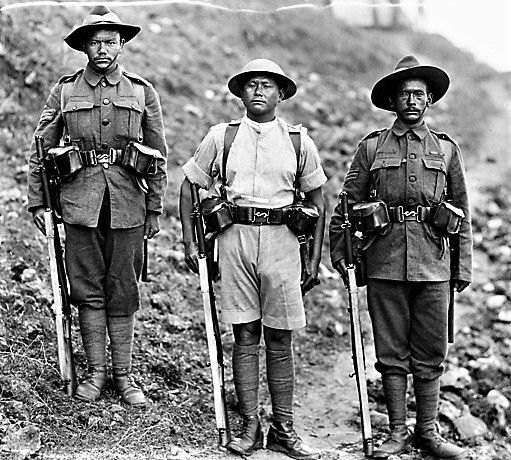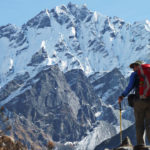“If a man says he is not afraid of dying, he is either lying or is a Gurkha.” Gurkhas are the fiercest fighter on the world who have been serving the British crown for more than 200 years. They are mainly known for their Bravery, Discipline, and Loyalty. Gurkhas are the soldier native to the Indian Subcontinent of Nepalese Nationality and Ethnic Nepalese of Indian nationality.
Gurkhas are Recureted for the Brish Army, Indian Army, Gurkha Contingent Singapore, and Gorkha Reserve Unite Brunie. Similarly, thousands of Nepali soldiers (Gurkhas) are sent to the war zone one different part of the world as the frontline UN Peacekeeping Force.
History Behind Nepali Gorkha Army
Gurkha is a commonly used name for Gorkhali which is the symbol of bravery and place Gorkha from ancient times in Nepal. It is also the synonym for Nepali from history. Generally, Gurkhas are soldiers native to the Indian subcontinent of Nepalese nationality and ethnic Nepalese of Indian nationality recruited for British Army, Indian Army, Gurkha contingent Singapore, Gorkha reserve unit Brunie, and UN peacekeeping force and war zones around the world.

During the Anglo Nepal war between the Nepal and British East India Company (presently India) David Ochterlony and British political agent William Fraser were impressed by the loyalty and bravery of the Nepalese soldiers that they proposed a battalion under Lt. Ross called the Nasiri regiment in April 1815.

Around 5000 men were recruited which included Gorkhalis, Kumaonis, Garhwali’s, and Himalayan men’s which later on was named Gurkhas and became the backbone of the British Indian forces. They served as troops under the contract to the East India Company in various wars such as:
- Pindaree war – 1817
- Bharatpur -1826
- First Anglo Sikh war – 1846
- Second Anglo Sikh war – 1848
- Indian rebellion – 1857
- World War I
- World War II
The land warfare force of Nepal which was formally known as the Royal Nepalese Army or Gurkha Army originated from the Gorkha Kingdom. It was founded in 1768. On 28 May 2008 after the 240-year shah dynasty abolition, it was named Nepalese army form the Royal Nepalese Army. Currently, it includes 95,000 regular personal and 50, 000 reserve personal.
How Gurkha Army Got World Recognition?
Though Nepal did not take part directly in the World Wars during World War I more than 200, 000 Gurkhas served under British army of which 20, 000 face casualties and received 2,000 gallantry awards. After World War I the battalion was increased to 33 which was again increased to 43 battalions during World War II where 32, 000 face the casualties and 2, 734 earned bravery awards.

Post World War II and Indian independence and partition of India in 1947 the original 20 battalions were split between the British army and the newly independent Indian Army where 12 battalion was with the British Army and 8 battalions remained with the Indian Army.
Currently “Gurkhas” are recruited for:
British Army
It is the principal land warfare force of the United Kingdom and part of the British Armed forces which was founded on 1st Jan 1660. Since the Army was formed nearly 360 years ago they have been part of many wars between the world powers which include warlike Seven-year war, Napoleonic War, Crimean War, and World War I & II. Britain’s victory in these wars has let itself established as one of the major military power in the current world. Since the cold war has ended the British army is deployed in various conflict zones or as a part of UN peace keep force. Currently, British Army comprises 79,620 regular personal and 29980 reserves personal.
Indian Army
It is the land warfare force of India and part of the Indian Armed Forces which was founded around 125 years ago on 1 April 1895. After independence from Indian colonialism in 1947, six regiments were transferred to independent India form the British Indian army which currently stands 7 regiments and 39battalion. Currently, the Indian Army comprises 1.2 Million active personal and 960 thousand reserves personal.
Gurkha Contingent Singapore
Gurkha Contingent is the line department of Singapore police force consisting primarily of Gurkhas from Nepal. The contingent was formed on 9th April 1949 in the wake of Indian Independence from British Colonialism. Members of the GC are trained to be highly skilled and are selected for their strong display of discipline and dedication. Every year in December around 320 applicants are selected from a pool of 20, 000 applicants out of whom 200 will join the GC and rest will go to the British army.
Gurkha Reserve Unit Bruine
Gorkha reserve unit is the Special elite guard force of the Sultanate in Bruine which was formed in 1974 and contains around 2 thousand personal. Generally, the Unite members are veterans from the British army who function as a praetorian guard to protect the Royal Family and major oil installations. They also work as a Special Forces unit directly under the command of the Sultan, as well as alongside the Special Forces Regiment and Special Combat Squadron of the Royal Brunei Armed Forces.
In the end here are some thoughts regarding Gurkhas
“Hearing a British Gurkha officer discuss his profession was something like hearing a priest discussing his vocation.”
Byron Farwell, ‘The Gurkhas’ (1984)
“If a man says he is not afraid of dying, he is either lying or is a Gurkha.”
Field Marshal Sam Manekshaw, Indian Chief of Army Staff (8 June 1969 – 15 January 1973)


